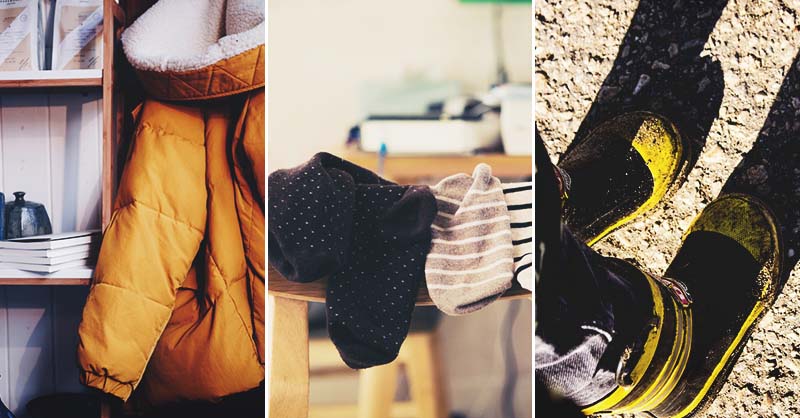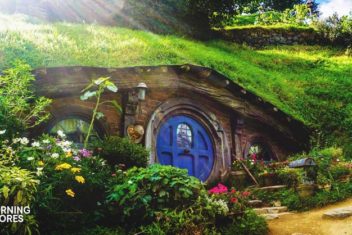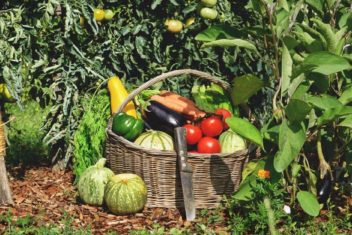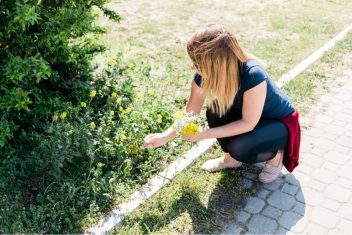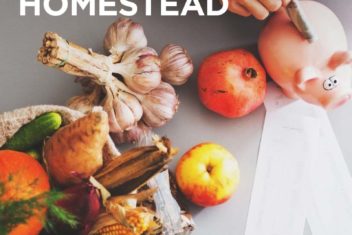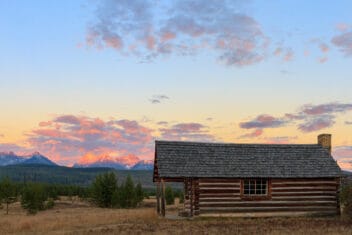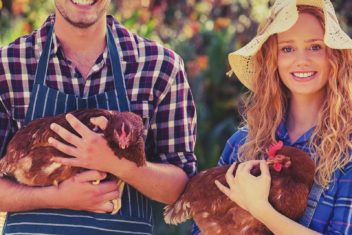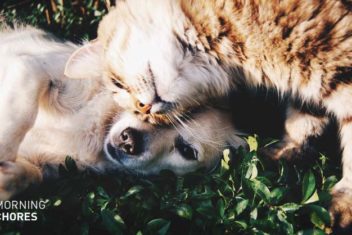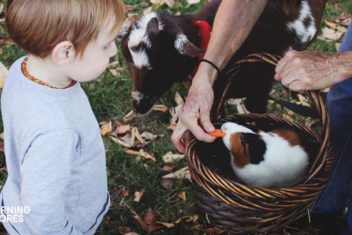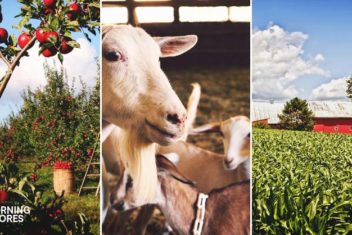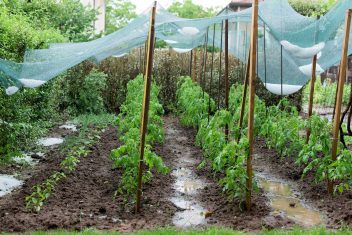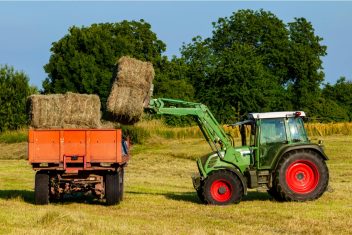When I was a teenager, I had a half-shaved head and otherwise purple hair. I loved to rip up my stockings and wear plaid skirts with neon combat boots. I was very much a follower of punk rock fashion (much to my parent’s displeasure).
If you saw me now, you’d probably find that hard to believe. Because now I am a homesteader. I spend most of my time in easy to wash, durable clothing that always has holes in from where my goats nibbled.
Still even as a homesteader, buying most of my wardrobe at thrift stores, there are still a few clothing trends that make sense for us garden-loving, livestock keeping, anti-fashionistas. So, if you are new to homesteading and wondering how to dress like a real homesteader, here are your homestead clothing trends and fashion guide.
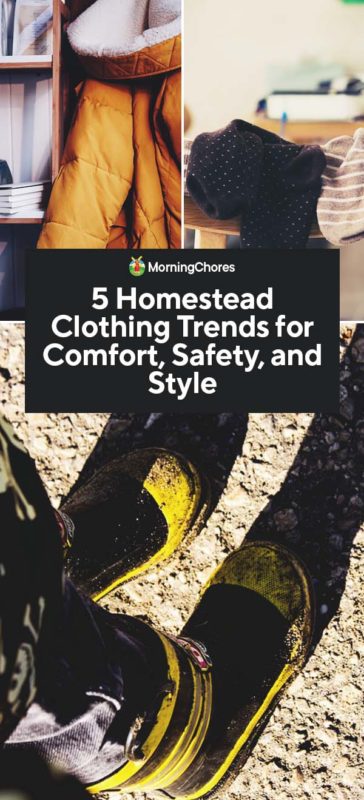
#1 Homestead Clothing Trends: Layers
Layers are one of those homesteading clothing trends that never go out of style. Whether it’s hot or cold, summer or winter, you’re going to need them.
Winter Wear
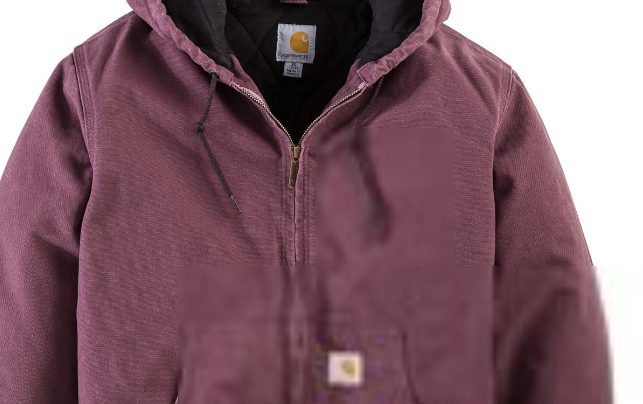
In winter, I usually start with a close-fitting undershirt, followed by a t-shirt, then a light sweater as my uniform. After that, I put on a light zippered jacket. Next comes the downy zip-up vest. Finally, to finish the look, the
– The Jacket
The jacket is key because it needs to be large enough to fit over all those layers. It still needs to be sufficiently close-fitting so you can maneuver your chores with ease.
I never thought I’d be the kind of person to buy one of those Carhartt construction worker jackets. However, once I did, I realized the wisdom in them.
The comfortable elastic wrist and waistbands cinch the jacket close to your body in exactly the right places. Also, the canvas covering is virtually goat-nibble proof!
Now you don’t have to buy a Carhartt. However, that brand is carried by all major farming supply stores and endorsed by farmers everywhere for a reason. It lasts. For us ladies, they’ve also added new fashionable colors like “dusty plum” and “cherrystone.”
– The Under Layers
On the under layers, I love cotton,
As you start to work and the day warms up, you’ll find yourself peeling off your layers one by one. That’s why zippers on the vest, light jacket, and humungo jacket are essential. That way you don’t have to take off your hat to lighten your layer load!
– Head Wear

Keeping your head covered is also key to winter warmth and good health. Without a good hat, all those other layers would be almost useless. Caps should cover your ears, fit firmly on your head, but not so tight that they leave a permanent indent when you take them off.
Since we homesteaders are often rebels of a sort, I personally think hats are the place where you can safely and easily express your inner anti-fashionista without interfering with your work.
Stripes, bright colors, decorative details, and just plain crazy fun hats are encouraged. Well, as long as they keep you warm and it doesn’t get in your way!
Also, a word of advice, if you occasionally like to throw down a fresh layer of straw in your goat barn and have a great big goat hug with your milkers, make sure to take the hat off first! I haven’t found a hat yet that can stand up to goat nibbling.
– Pants Optional?
You might be wondering where are my pants in this layering line-up. As long as your core is warm, they are fairly optional. Yes, I wear them. However, any sturdy pair of jeans will work just fine.
If you are thin-blooded (which usually goes away after a few months of hardcore homesteading) you might consider some ski pants or flannel-lined jeans.
If you live in USDA planting zones 5 and below, then you may qualify for thermals and coveralls. Still, you also likely have heated barns and other comforts that we homesteaders with a more temperate climate don’t have.
Summer Wear
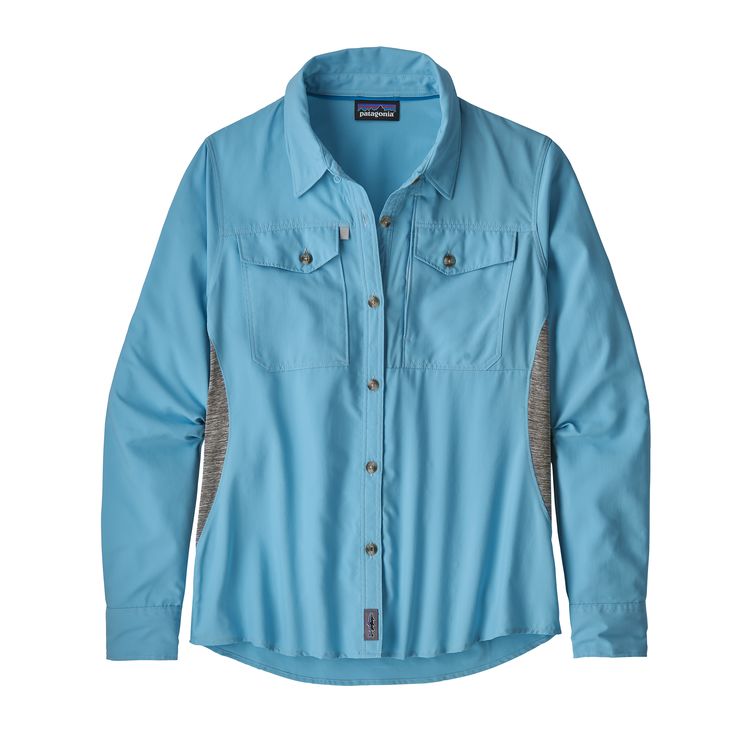
Layers are equally important in summer. When you garden, you spend a lot of time in the sun.
A certain amount of exposure is good to keep up your vitamin D. However, sunburns, premature aging, and the risk of skin cancer are not on most homesteader’s agendas.
– The Under Layers
Similar to winter, I start with a close-fitting undershirt, that’s usually a tank top. This helps whisk up perspiration as the day heats up. Then, I wear a light-colored t-shirt that covers my shoulders.
I will strip down to my tank top in the early mornings and late afternoons when the sun’s rays aren’t so intense. If my shoulders are starting to get too much sun, then I’ll put my t-shirt back on. Still, during peak sun hours, full coverage is required!
– The UV Rated Outer Layer
So, my summer ensemble also includes a button-down or zippered long-sleeve outerwear shirt that is UPF-rated for protection. Outdoor adventure wear companies like Columbia and Patagonia make shirts that are specifically designed with a UV protection of 50+. They are also light-weight and moisture-wicking to help you stay cool, even in long sleeves.
– Head Protection
A good hat with a brim to protect your face and neck from peak sun are also critical. Again, feel free to exercise some personal style in your hat choice.
If you want to act out your inner Indiana Jones or other globe-trotting adventure ideas with your hat choice, go for it! Just make sure it shades all the parts your UVP shirt won’t cover.
– Pants or Shorts?
My winter worries about pants are minimal. However, summer is a different story. I often wear shorts in summer. For extended sun exposure, though, I opt for pants.
Skin cancer is as much
#2 Homestead Clothing Trend: Sucker for Socks
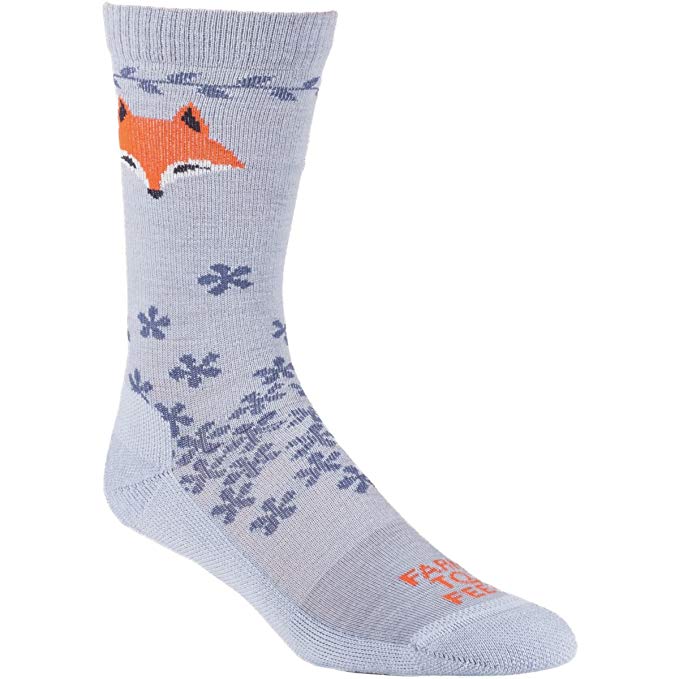
I didn’t appreciate socks much until I started homesteading. Now, I spend more time planning my sock purchases than I do most of the rest of my wardrobe. Socks matter.
– Blended Fibers
Wool is cool until it’s not. Then it’s hot. So, pure wool is not my favorite foot fiber. Wool blends tend to work better for both cooling and heating your tootsie footsies.
– Fit for Duty
Calf fit is as important as foot size fit. Socks that slip down will drive you crazy. Socks that cut off circulation will make your feet colder than not wearing any.
– Farmers Know Best
One of the Farm to Feet factories is located in my county. So, I’ve become a big fan of their sock-stylings. However, you can also find great socks at some of your farm supply stores.
Farmers know how vital good socks are and aren’t afraid to spend wisely. If it’s on display and never goes on sale at your local farm supply, chances are it’s a winner.
You can always ask farmers for sock suggestions though. You’ll be surprised how many people who work outdoors year-round know on the subject of socks.
#3 Homestead Clothing Trend: The Glove Collection
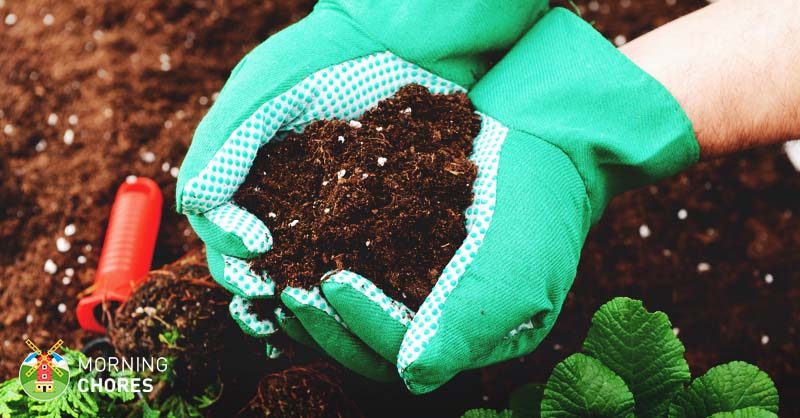
I must have 30 pairs of gloves. They range from light-weight to snow-sturdy depending on the kind of activities I am doing. I am personally of the opinion that you can never have too many pairs of gloves as a homesteader.
– Buy Multiples
If you find a pair of gloves you like, buy multiple pairs. Gloves get wet. They get covered with unidentifiable goop that necessitates immediate cleaning.
If you only have one pair, that will really limit your ability to get things done with gloves getting gross. Keep back-ups handy!
– Keep a Variety of Styles
Gloves on the homestead are like earrings in the outside world. You need different kinds for different occasions. Plus, since they are small and easy to store, you might as well have a nice collection for when you need them.
In general, you need summer gardening gloves and winter gardening gloves. You need heavy-duty gloves for handling things like wood with splinters and ripping out briers. You need gloves for warmth.
You also need gloves for doing things you’d rather not do with your bare hands. For that reason, most homesteaders have an endless supply of dish-style gloves for the gross stuff we have to do at times. These are also good for things like working with lye when making soap.
#4 Homestead Clothing Trend: Functional Footwear
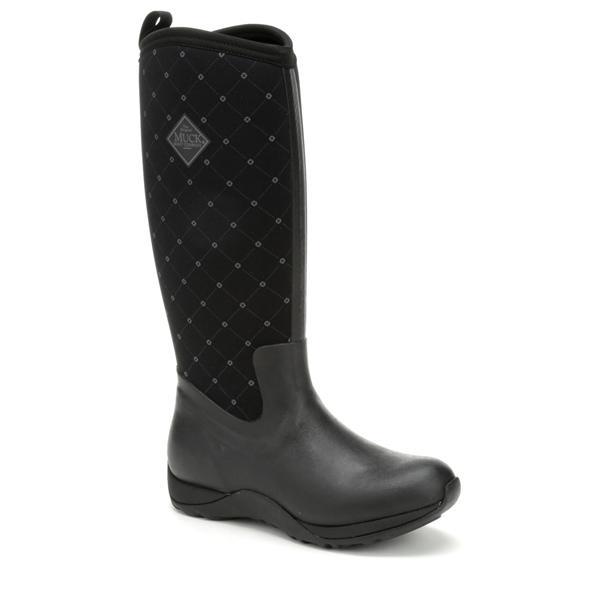
When you sit in a toasty office all day, you can get away with wearing less than comfortable and appropriate shoes. You can even kick them off under your desk to give your toes a break from being smooshed.
When you work outside though, you really need shoes that are right for your conditions and fit well. You might kick them off at times to do some barefoot gardening. However, that’s only a small part of your homesteading duties.
For all that other stuff, you must be properly shod!
– Work Boots
If you are used to buying overstock shoes from outlets, your first pair of homestead work boots will send you into sticker shock. They can run between $120-200 for a decent pair. As a bonafide cheapskate, I can tell you, though, that is money well spent.
A good pair of work boots will last you 2 years on the homestead. Or, you can buy about 10 pairs of non-quality work boots and be uncomfortable while wearing them. Also, choosing boots that slip on rather than lace-up will save you lots of time going and in and out of the house!
The Muck Boot is sort of the standard of footwear for anyone doing farm-type work. They have multiple styles for different conditions.
Personally, I find the steel toe versions are a bit too heavy for daily work. However, as someone who battles cold feet constantly, I can tell you the “Arctic” styles are worth the extra expense in winter.
Muck is not the only game in town though. Other manufacturers like LaCrosse and Bogs also have homestead-style work boots with a bit of fashion sense too.
– Garden Clogs

Even if you are the barefoot gardening type (I am), you still need some good garden clogs. There are times, like when it’s muddy that slipping off shoes instead of cleaning your feet is simply easier. Also, if the blister beetles show up, you’ll need a good pair of garden clogs to crush them with.
I am a fan of the clog styles that have a bit of support at the back. You can still slip them on and off. However, you don’t slip out of them at inopportune times (like when chasing a neighbor dog about to eat one of your chickens).
Like hats, clogs make it is easy to express your flair for anti-fashion. I love horrendously bright Crocs or flower-painted Sloggers. I often get visited by bees and other pollinators when wearing them!
– Rain Boots
During the rainy season when battling mud, you might also want to invest in a separate pair of rain boots to make sure your feet stay completely dry.
#5 Homestead Relaxing: Fireside Fashionista
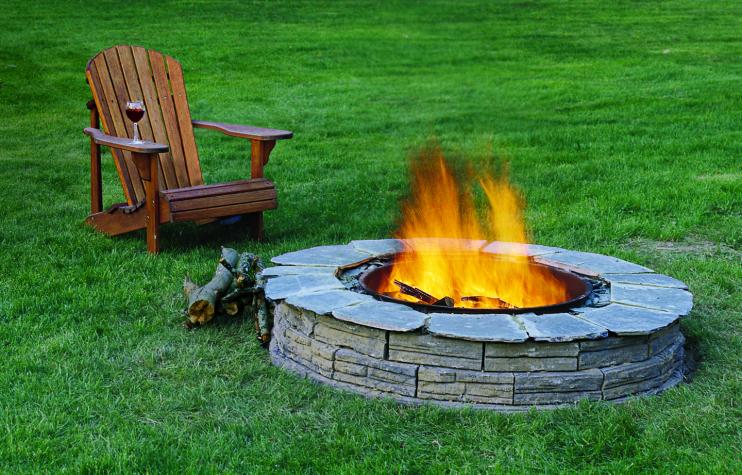
We, homesteaders, are not all work and no play. No, in fact, we’re often the first to knock-off early when the conditions are right for a Friday night firepit. This is where those stylish fisherman cable-knit sweaters and fun flannels come in handy.
When I am off duty, I am all about comfort while looking the part of an accomplished homesteader. I like my pink and purple flannel button-down shirts. I love to slip on my equestrian style boots that are much too difficult to clean for daily use.
Heck, I even comb my hair for big events like outdoor marshmallow roasts!
Conclusion
Seriously, when you are off-duty wear whatever the heck you want. Homesteading is a lifestyle choice, not a fashion show.
Still, there are some practical homestead clothing trends you’ll have to follow so you can be comfortable while working; like carefully selected layers, socks, gloves, hats, boots, and garden clogs. The rest though is up to you.
Be real. Be you. Even so, when homesteading, dress for comfort, safety, and when possible personal style.
